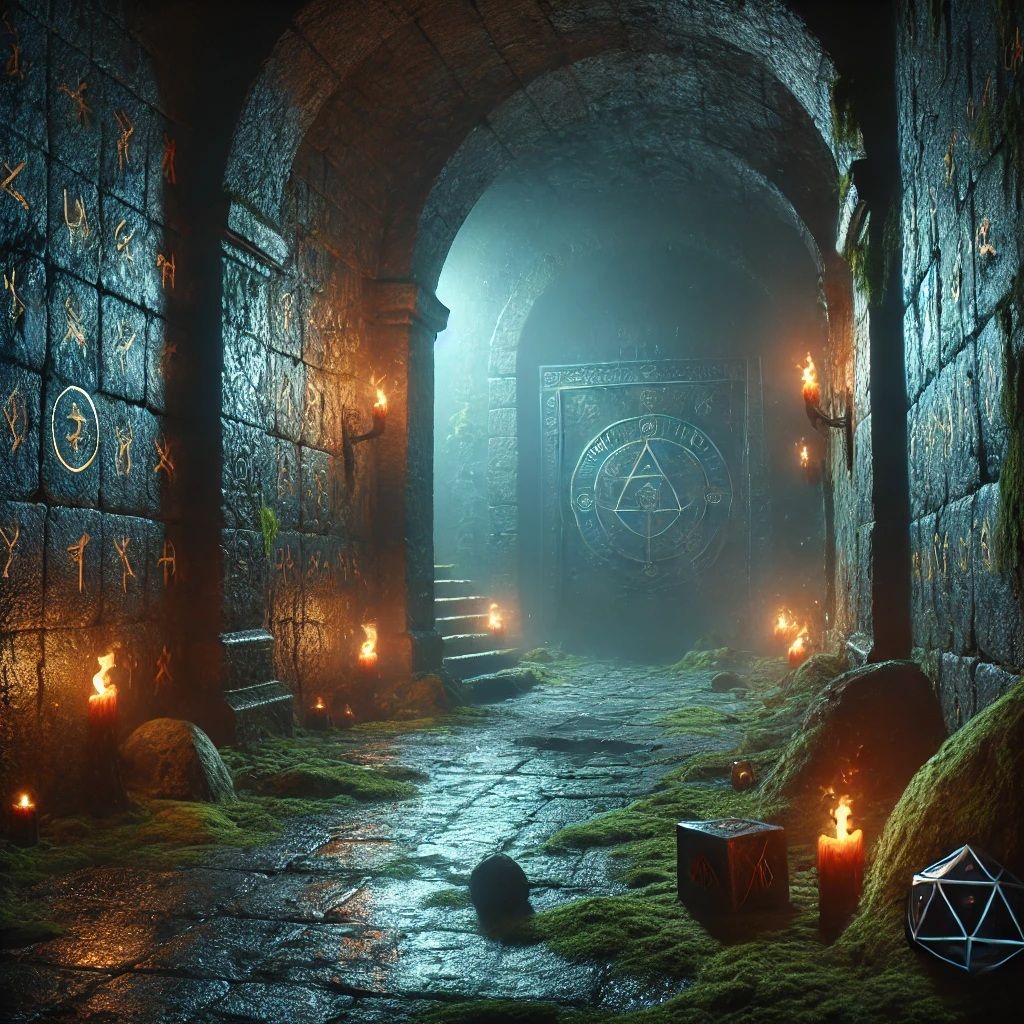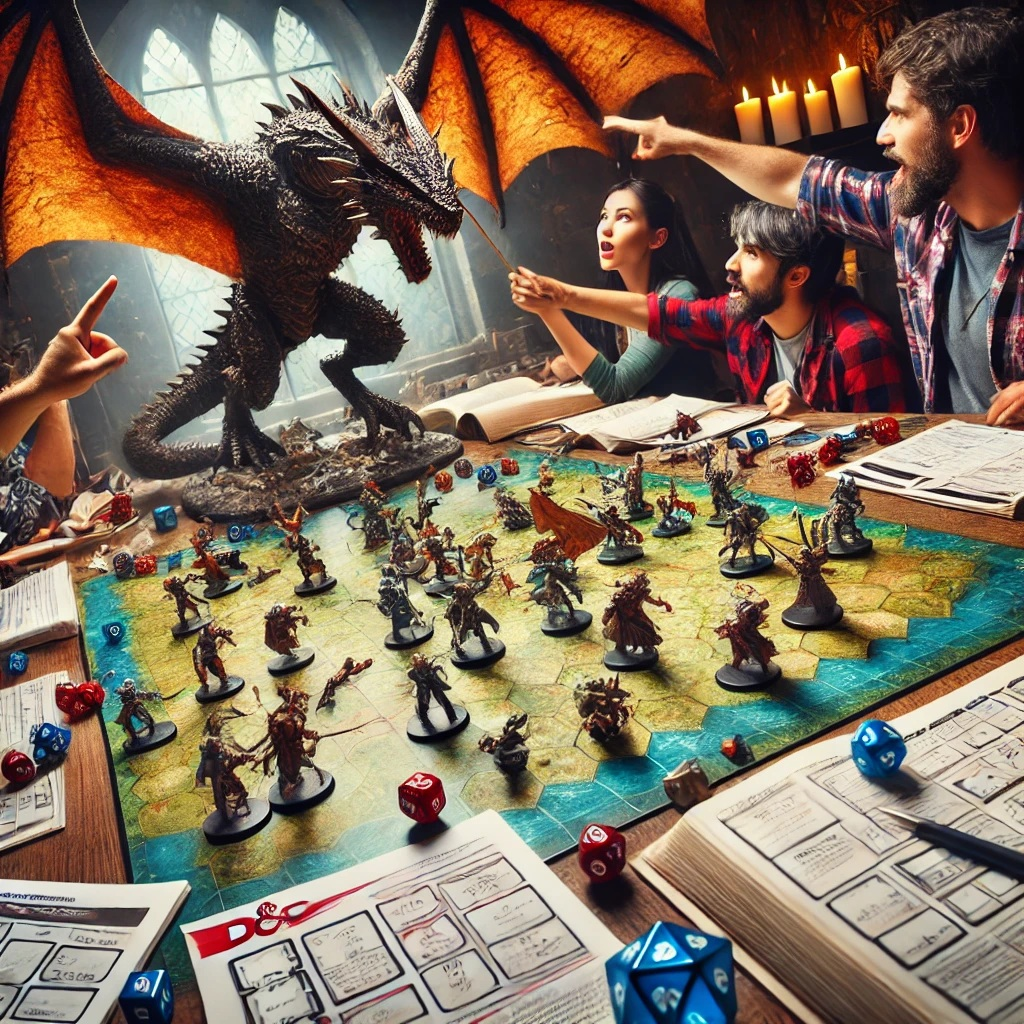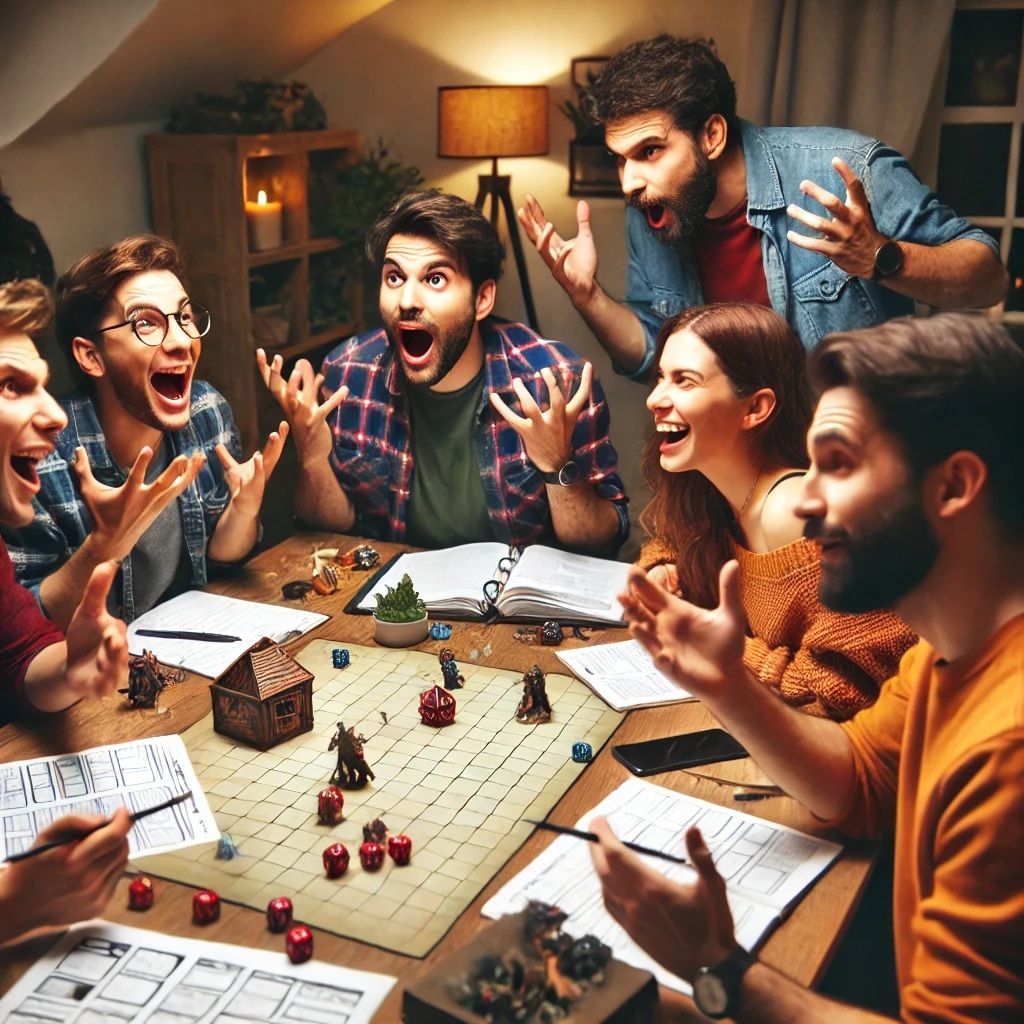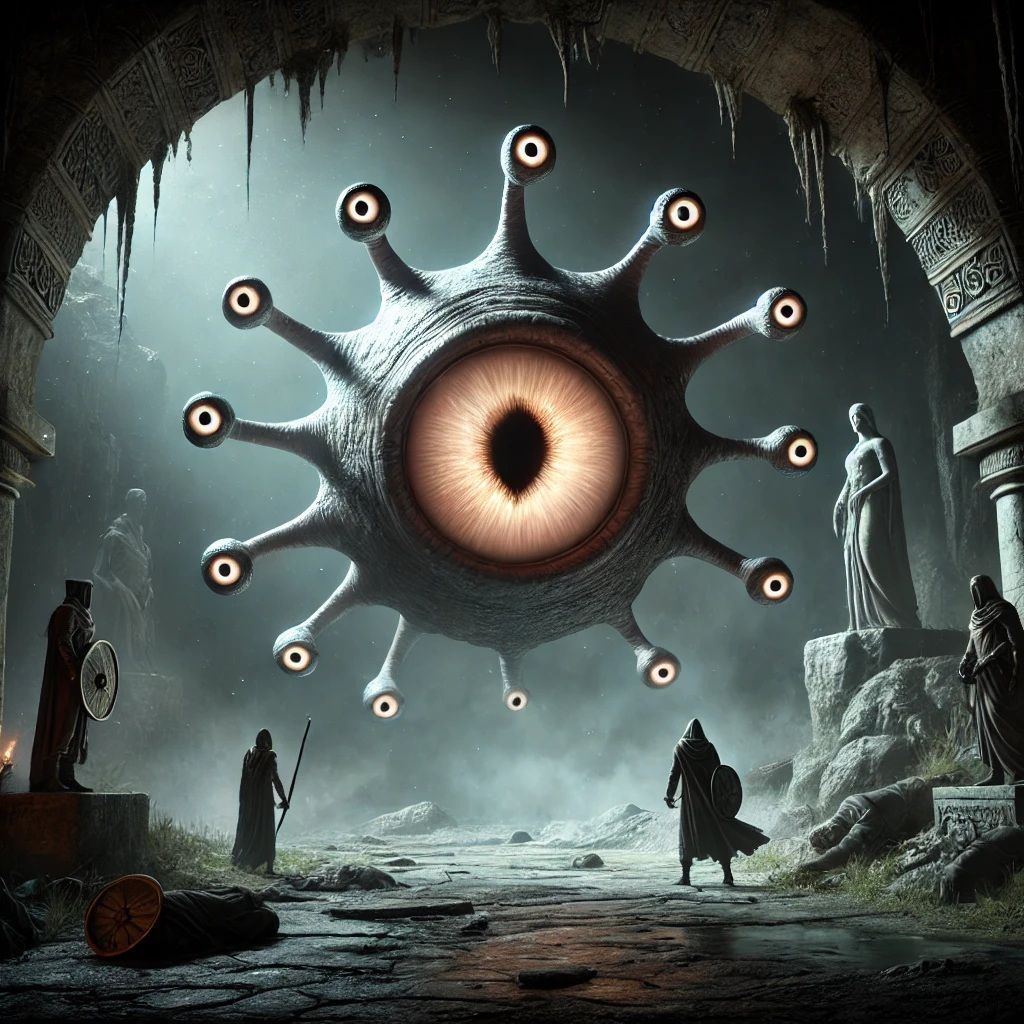Creating Tension: Building Suspense and Drama in Your Campaign
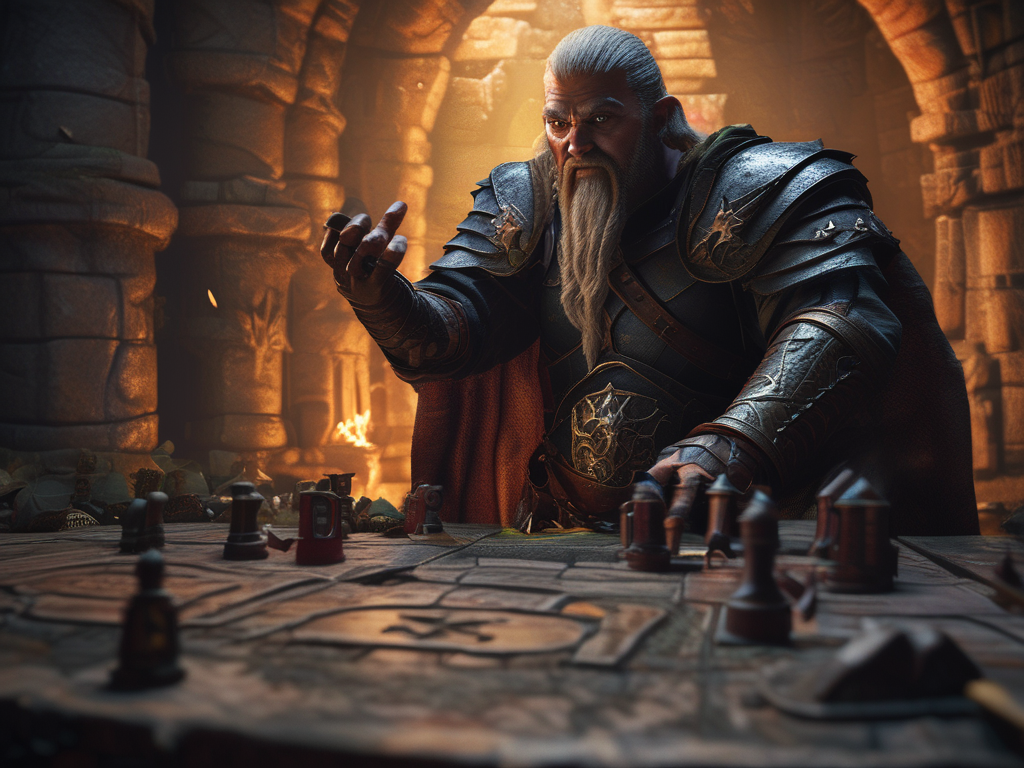
Dear Readers, welcome back to our Dungeons & Dragons (D&D) blog! Today, we’re diving into an essential aspect of storytelling that can transform your campaign from a simple adventure into a gripping narrative: creating tension. Building suspense and drama in your campaign keeps players on the edge of their seats, eager to see what happens next. It’s the secret ingredient that makes your game memorable and engaging. In this post, we’ll explore various techniques and strategies to infuse your campaign with tension, ensuring that your players are constantly invested in the story and their characters’ fates. So, let’s embark on this journey to master the art of suspense and drama in D&D.
The Importance of Tension in Storytelling
Tension is the emotional pull that keeps players engaged and invested in the story. It arises from uncertainty, conflict, and the stakes at play, driving the narrative forward and compelling players to act.
Why Tension Matters:
1. Emotional Investment:
- Tension fosters emotional investment in the story and characters. When players care about the outcome, they become more engaged and motivated.
2. Memorable Moments:
- Suspenseful and dramatic moments are often the most memorable parts of a campaign, creating lasting impressions and stories that players will recount for years.
3. Dynamic Gameplay:
- Tension adds dynamism to gameplay, preventing it from becoming predictable or monotonous. It encourages players to think creatively and make meaningful decisions.
4. Narrative Drive:
- Tension drives the narrative forward, propelling characters toward their goals and deepening the plot.
Techniques for Building Tension
Building tension in your campaign involves various techniques that manipulate pacing, create uncertainty, and heighten the stakes. Here are some effective strategies to incorporate tension into your game.
1. Pacing
Pacing is the rhythm of your story, balancing moments of action, rest, and rising tension. Controlling the pacing can significantly impact the level of suspense and drama in your campaign.
Techniques for Effective Pacing:
a. Peaks and Valleys:
- Alternate between high-tension moments (peaks) and periods of relative calm (valleys). This creates a dynamic flow that keeps players engaged without overwhelming them.
Example: After a thrilling chase through a dense forest (peak), allow the players a moment of respite at a secluded campsite where they can regroup and plan their next move (valley).
b. Cliffhangers:
- End sessions or significant scenes on cliffhangers, leaving players eager to find out what happens next. This builds anticipation and keeps them invested in the story.
Example: End a session with the players opening a mysterious chest, only to find it empty except for a cryptic note that hints at a larger conspiracy.
c. Varying Intensity:
- Vary the intensity of scenes to create a rhythm of rising and falling tension. Not every scene needs to be high-stakes, but a gradual increase in intensity can build suspense over time.
Example: Begin with a minor conflict, such as a bar brawl, escalate to a dangerous encounter with a rival faction, and culminate in a life-or-death confrontation with the main antagonist.
2. Uncertainty and Mystery
Uncertainty and mystery are powerful tools for creating tension. When players are unsure of what lies ahead or what the true motivations of NPCs are, they become more cautious and invested in uncovering the truth.
Techniques for Creating Uncertainty and Mystery:
a. Foreshadowing:
- Use foreshadowing to hint at future events or dangers without revealing everything. This builds anticipation and keeps players guessing.
Example: Describe strange, unsettling dreams that plague the characters, hinting at an impending threat that they will face later in the campaign.
b. Ambiguous NPCs:
- Introduce NPCs with unclear motives or hidden agendas. Players will be wary of these characters and curious about their true intentions.
Example: A charming merchant offers the players valuable information but insists on a high price. His true loyalties and reasons for helping them remain unclear.
c. Hidden Threats:
- Present threats that are not immediately visible or understood. This creates a sense of unease and encourages players to investigate and prepare for the unknown.
Example: The players find evidence of a monstrous creature stalking the area—footprints, claw marks, and eerie howls at night—but they have yet to encounter it directly.
3. Heightening the Stakes
Raising the stakes in your campaign increases the tension by making the consequences of failure more severe. Players will be more invested in their actions when they know that much is on the line.
Techniques for Heightening the Stakes:
a. Personal Stakes:
- Tie the stakes to the characters’ personal goals, relationships, or backstories. When the stakes are personal, players are more emotionally invested.
Example: A player’s character has a loved one taken hostage by the villain, and their safe return depends on the party’s success.
b. Time Pressure:
- Introduce time-sensitive challenges where players must act quickly to succeed. The ticking clock adds urgency and tension to the situation.
Example: The players must defuse a magical bomb set to explode in an hour, requiring them to race against time to find and disable it.
c. Escalating Consequences:
- Gradually increase the consequences of failure as the campaign progresses. This keeps the tension high and the players motivated to succeed.
Example: Early in the campaign, failure might result in losing valuable information. Later, failure could mean the destruction of a city or the death of a key NPC.
4. Conflict and Opposition
Conflict and opposition are central to creating tension. Challenging the players with obstacles, antagonists, and moral dilemmas keeps them engaged and invested in the story.
Techniques for Creating Conflict and Opposition:
a. Antagonists:
- Develop compelling antagonists with clear motivations and the ability to challenge the players. A well-crafted villain can be a constant source of tension.
Example: An ambitious warlord seeks to conquer the realm, and the players must thwart his plans while dealing with his spies, soldiers, and political machinations.
b. Moral Dilemmas:
- Present players with moral dilemmas where there are no clear right or wrong choices. This forces them to weigh their options carefully and face the consequences of their decisions.
Example: The players must decide whether to save a village from an impending attack or protect a vital strategic location elsewhere, knowing they cannot do both.
c. Internal Conflict:
- Introduce internal conflict within the party, such as differing goals, values, or secrets. This can create tension among the players and add depth to their interactions.
Example: Two characters have opposing views on how to handle a captured enemy, leading to a heated debate and potential rift in the party.
Practical Applications: Creating Tension in Different Campaign Scenarios
Now that we’ve covered the techniques for building tension, let’s explore how to apply these techniques in various campaign scenarios, including combat, social interactions, and exploration.
1. Combat Scenarios
Combat scenarios are inherently tense, but you can heighten the suspense and drama with specific techniques.
Techniques for Creating Tension in Combat:
a. Environmental Hazards:
- Incorporate environmental hazards that players must navigate during combat, such as collapsing structures, spreading fires, or unstable ground.
Example: During a battle in a crumbling castle, the players must avoid falling debris and collapsing floors while fighting off enemies.
b. High-Stakes Objectives:
- Introduce objectives beyond simply defeating enemies, such as rescuing hostages, defusing bombs, or securing vital locations.
Example: The players must protect a group of civilians from an attacking monster while also trying to lure the creature into a trap.
c. Dynamic Encounters:
- Create dynamic encounters where the situation changes over time, such as reinforcements arriving, new threats emerging, or the battlefield shifting.
Example: As the players battle a necromancer, waves of undead minions continue to rise from the ground, forcing them to adapt their strategy.
2. Social Interactions
Social interactions can be just as tense and dramatic as combat when handled effectively.
Techniques for Creating Tension in Social Interactions:
a. Hidden Agendas:
- NPCs may have hidden agendas or ulterior motives, making social interactions a game of wits and suspicion.
Example: The players attend a royal banquet where various factions vie for influence, each with their own schemes and secrets.
b. High-Stakes Negotiations:
- Raise the stakes in negotiations by tying them to significant consequences, such as securing an alliance, preventing a war, or gaining vital resources.
Example: The players must negotiate a peace treaty between two warring factions, knowing that failure could lead to widespread conflict.
c. Social Pressure:
- Create social pressure by placing players in situations where their reputation, honor, or relationships are on the line.
Example: The players are invited to a noble’s court, where their behavior and decisions will influence their standing and future opportunities.
3. Exploration Scenarios
Exploration scenarios can be filled with tension through environmental challenges, mysteries, and discoveries.
Techniques for Creating Tension in Exploration:
a. Unknown Dangers:
- Populate unexplored areas with unknown dangers, such as traps, hidden creatures, or environmental hazards.
Example: The players explore an ancient tomb filled with traps, undead guardians, and cryptic puzzles that must be solved to proceed.
b. Environmental Challenges:
- Introduce environmental challenges that test the players’ survival skills, such as harsh weather, treacherous terrain, or limited resources.
Example: The players traverse a vast desert where they must manage their water supply, navigate sandstorms, and avoid dangerous wildlife.
c. Mysterious Discoveries:
- Present players with mysterious discoveries that raise questions and compel further investigation.
Example: The players find a strange, glowing artifact in a ruined temple. Its purpose and origin are unknown, but it radiates powerful magic.
Case Studies: Applying Tension Techniques in Campaigns
Let’s explore a few case studies to illustrate how tension techniques can be effectively applied in different campaign scenarios.
Case Study 1: The Siege of Blackwater Keep
Scenario: The players are tasked with defending Blackwater Keep from an impending siege by a ruthless warlord and his army. The siege will determine the fate of the region.
Techniques Applied:
a. Time Pressure:
- The players have limited time to fortify the keep, gather supplies, and recruit allies before the enemy arrives.
b. High-Stakes Objectives:
- During the siege, the players must protect key points within the keep, such as the gatehouse, the armory, and the command center.
c. Dynamic Encounters:
- The situation changes throughout the siege, with enemy reinforcements arriving, breaches in the walls, and desperate last stands.
Outcome:
- The players successfully defend the keep by making strategic decisions, rallying the defenders, and repelling the enemy forces. The intense, high-stakes nature of the siege creates a memorable and dramatic climax to the campaign arc.
Case Study 2: The Diplomatic Mission to Eldoria
Scenario: The players are sent on a diplomatic mission to Eldoria, a kingdom on the brink of civil war. Their goal is to negotiate a peace treaty between the rival factions.
Techniques Applied:
a. Hidden Agendas:
- Key NPCs, including nobles, military leaders, and foreign ambassadors, have their own hidden agendas and interests.
b. High-Stakes Negotiations:
- The success of the negotiations will determine the future of Eldoria and its relationship with the players’ homeland.
c. Social Pressure:
- The players must navigate the complex social dynamics of the Eldorian court, where their actions and words are closely scrutinized.
Outcome:
- The players manage to broker a tentative peace agreement by uncovering and addressing the underlying issues driving the conflict. The tension and intrigue of the diplomatic mission create a compelling and suspenseful narrative.
Case Study 3: The Curse of the Sunken Temple
Scenario: The players explore a sunken temple rumored to be cursed. They seek a powerful artifact believed to be hidden within its depths.
Techniques Applied:
a. Unknown Dangers:
- The temple is filled with traps, guardians, and supernatural phenomena that challenge the players at every turn.
b. Environmental Challenges:
- The players must contend with underwater hazards, limited air supply, and the threat of the temple collapsing.
c. Mysterious Discoveries:
- As they delve deeper, the players uncover ancient writings, cryptic symbols, and clues about the temple’s history and the nature of the curse.
Outcome:
- The players navigate the temple’s dangers, solve its mysteries, and ultimately find the artifact. However, they also uncover a dark secret that raises new questions and sets the stage for future adventures. The combination of exploration, mystery, and high stakes creates a tense and thrilling experience.
Tips for Maintaining Tension Throughout a Campaign
Maintaining tension throughout a campaign requires careful planning, pacing, and adaptability. Here are some tips to help you sustain suspense and drama over the long term.
1. Vary the Sources of Tension
Diverse Threats:
- Introduce a variety of threats and challenges to keep players on their toes. These can include physical dangers, social conflicts, and moral dilemmas.
Example: Alternate between combat encounters, political intrigue, and personal quests to provide a balanced and engaging experience.
2. Build Long-Term Mysteries
Ongoing Plot Threads:
- Weave long-term mysteries and plot threads into your campaign that gradually unfold over time. This keeps players invested and curious.
Example: Introduce a mysterious symbol that appears throughout the campaign, hinting at a larger conspiracy or ancient prophecy.
3. Use NPCs to Drive Tension
Complex Characters:
- Develop NPCs with complex motivations and relationships that can drive tension and conflict within the story.
Example: A trusted ally reveals a hidden agenda, forcing the players to question their loyalties and make difficult decisions.
4. Adapt to Player Actions
Responsive World:
- Ensure that the world responds dynamically to the players’ actions. Their choices should have meaningful consequences that impact the story.
Example: If the players choose to ally with a rival faction, it affects their standing with other groups and alters the course of the campaign.
5. Balance Tension with Relief
Moments of Respite:
- Balance high-tension scenes with moments of relief and downtime, allowing players to regroup and reflect.
Example: After an intense battle, give the players a chance to rest in a safe haven, interact with NPCs, and plan their next move.
Conclusion
Creating tension and building suspense and drama in your D&D campaign is an art that requires careful planning, creativity, and adaptability. By mastering techniques such as pacing, uncertainty, raising the stakes, and introducing conflict, you can craft a narrative that keeps players engaged, emotionally invested, and eager to see what happens next.
Remember to vary the sources of tension, build long-term mysteries, use complex NPCs, and adapt to player actions. Balance moments of high tension with periods of respite to maintain a dynamic and engaging experience.
Until next time, Dear Readers…
All Rights Reserved | The Daily Dungeon Master
















